Pueblo Bead Jewelry: Living Design
by Paula A. Baxter, October 2018 (Available on Amazon)
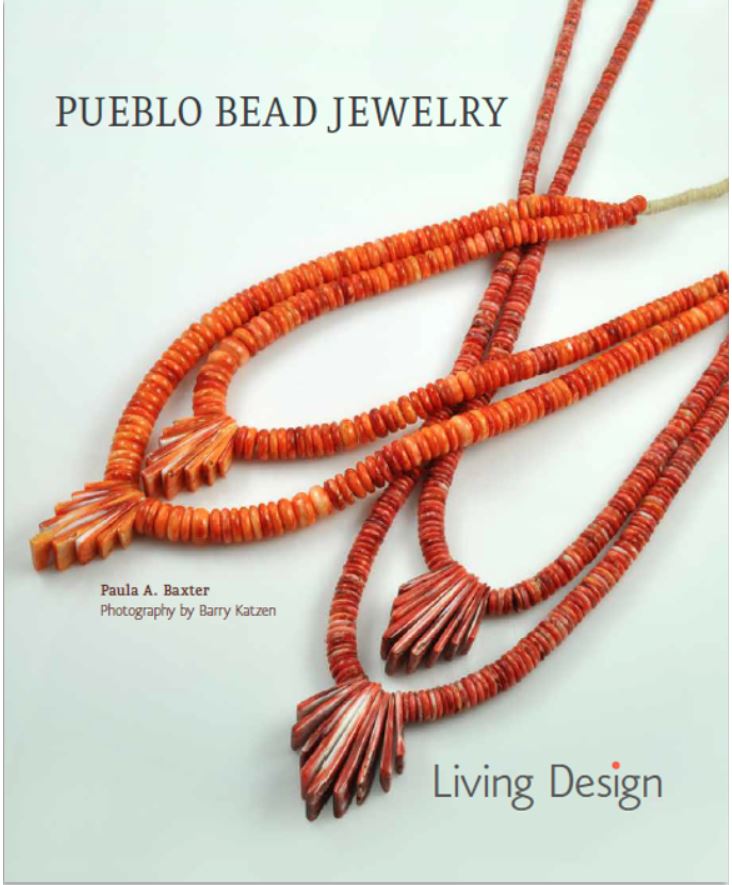
The bead played a vital role in Pueblo Indian jewelry design, and its influence continues today in modernist American design. In these pages, featuring more than 250 breathtaking photos, renowned expert Baxter integrates her decades of research with updated findings. Beads were made in the prehistoric American Southwest by the ancestors of the Pueblo Indians, and survived into the historic era. Bead jewelry creations in shell, stone, and silver are important in the Native American jewelry marketplace. The book revisits some leading misconceptions about Pueblo jewelry-making in the existing literature. A survey of modern Pueblo jewelry innovation confirms that its design is second to none, and discusses how Pueblo design meshed with American mid-century modernist expression. Today's Pueblo jewelers, also featured here, continue to offer invention and originality.
Southwestern Indian Rings
Paula A. Baxter, October 28, 2011 (Available on Amazon)
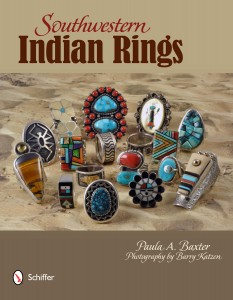
With a fascinating variety of American Indian rings from the southwestern United States shown in more than 350 color photos, this book provides a design history of these rings, beginning with pre-contact artifacts and continuing through to contemporary artistic innovations. The text surveys key developments in Native American ring design; materials and methods of construction; definitions for historical and vintage rings; master innovators; and the transition to wearable art since 1980. Shortly after the Civil War, Native American artisans began making silver rings set with turquoise, coral, jet, mother-of-pearl, and colored shell, adding lapis, malachite, onyx, and petrified wood over the decades. More recently, artisans began utilizing gold and such non-traditional settings as opals and diamonds. Works by Navajo (also known as Diné) and Pueblo artists are featured, although Apache, Northern Cheyenne, and Sonoran Desert Native jewelers are also included. A guide to valuation issues and resources is offered for collectors.
Southwest Silver Jewelry: The First Century
Paula A. Baxter, July 1, 2007 (Available on Amazon)
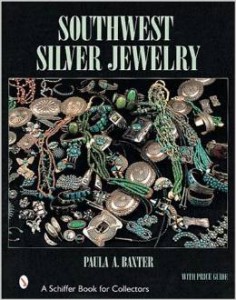
This beautiful book examines the first century of Navajo and Pueblo metal jewelry-making in the American Southwest. Beginning in the late 1860s, the region's native peoples learned metalworking and became accomplished silversmiths. Their work was united with a long-standing native traditon of beads and ornaments made from turquoise and other natural materials. The cross-cultural appeal of this jewelry continued into the mid-1900s, despite competition from tourist jewelry and mass-produced imitations. By the 1950s and 1960s, masters such as innovators Kenneth Begay and Charles Loloma created a legacy of fine art jewelry that is prized today. This development is discussed in the context of social changes and adaptations over the century. A values reference guide is also provided.
Encyclopedia of Native American Jewelry: A Guide to History, People, and Terms
Paula A. Baxter, June 2, 2000 (Available on Amazon)
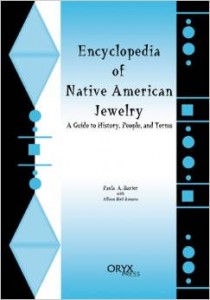
This new guide is the first to explore all facets of Native American jewelry—its history, variety, and quality—in one convenient resource. With coverage beginning in the mid-nineteenth century, this resource includes artists, techniques, materials, motifs, and more. The encyclopedia opens with helpful introductory essay to acquaint the reader with the subject. More than 350 entries and over 80 photos make this new encyclopedia and exceptional value.
Southwestern Indian Bracelets: The Essential Cuff
Paula A. Baxter, April 3, 2015 (Available on Amazon)
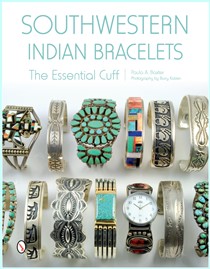
This design history of Southwestern Indian bracelets examines their start in 1868 up through 1970, and the post-1980 legacy that honors those first 100 years. More than 360 color photos illustrate the history. The book begins by examining sources for designs and how styles came into being, followed by a look at historic, vintage, curio, and post-1980 bracelets that reflect the new Native Style. Learn how Native Americans have always made essential contributions to design by tracking ongoing craft innovation and social change, and how popular culture impacts the individual artists who create this jewelry form. Whether featured on eBay, sold on QVC’s home shopping channel, or seen in the pages of O, The Oprah Magazine, old and new Southwestern Indian cuff bracelets are an integral part of today’s finest jewelry-making.